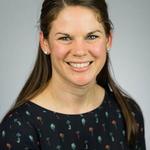
The tradeoffs: Intensive and Extensive
Generally speaking, there are tradeoffs between intensive and extensive ruminant systems. Extensive systems, with grazing flocks and herds, can provide high-quality food from marginal land while promoting beneficial ecosystem processes. However, such approaches tend to produce less food per unit of land compared to more intensive, simplified ecosystems. Overgrazing—when there are too many animals relative to the land’s capacity—causes soil and habitat degradation.
Intensive systems, in which animals are more densely raised and often separate from their feed source, can be more efficient and reduce the area of land required for the same output of food. The disconnect between the location of food production and manure disposal can adversely affect soil and water quality, but mindful planning can integrate intensive systems into a circular bioeconomy.
Andrew Balmford and colleagues have studied whether land sparing (high-efficiency) or land sharing (biodiversity-rich) approaches are better for the conservation of wildlife species. They conclude that dedicated areas of high-yield farming are more beneficial than larger areas of extensive, integrated agriculture. That said, intensification is no silver bullet: high-yield production alone does not guarantee a land-sparing effect, especially if efficiency gains create financial incentives to expand the area under production.
Spillover effects: humans, wildlife, and disease
A high-profile outcome to consider is the spillover of zoonotic disease from a wildlife reservoir into the human population—an ecosystem “dis-service.” What is the relationship of the livestock sector to this process?
Such spillover events are the logical consequence of the increased rate of contact between susceptible people and wildlife, and some spillover events are infectious—compounded by domestic or food-source animals as a potential link between wildlife and humans. As human land use expands for all purposes, including agriculture, the result is not only decreased area for wild habitats, but also fragmentation of that area into smaller pieces. This translates into a greater “surface area” with opportunity for contact between wildlife and humans, and therefore transmission of infectious agents (which are natural members of the wild ecosystem).
Considering these factors, intensive or land-sparing systems offer an apparentadvantage (over extensive or land-sharing systems) at decreasing the frequency of spillover events: domestic animals are kept separate from wild habitats, strict biosecurity measures further reduce the risk of introducing organisms from the outside, and efficient production lowers the total amount of land required for food production.
On the other hand, if an infectious agent does enter such a system, the dense population of susceptible animals will facilitate rapid transmission and potentially large consequences.
Moving forward: incremental steps
In closing, the role of livestock is complex, not yet optimal, and has impacts to be valued in more categories than just food and waste. There are three key areas for work toward that end:
1) Research to understand the underlying processes and relationships between ruminant livestock systems, local and global ecosystems, and planetary thriving
2) Holistic assessment of existing systems and practices. We tend to focus on outcomes that are straightforward to measure and therefore to improve, such as greenhouse gas emissions and input/output efficiency. By paying attention to metrics that capture more of the tradeoffs, we can lower the risk that choices now lead to regretted side effects later. For example: the Food and Agriculture Organization of the United Nations just released an assessment tool for biodiversity and the livestock sector.
3) Attach value to outcomes and practices which are understood to be valuable. Examples include:
- Certification plans (e.g., Ben & Jerry’s Caring Dairy Standards) reward producers for practices which promote environmental and social
- Federal conservation programs compensate US farmers for actions which prioritize long-term environmental sustainability
- Public and private initiatives raise awareness of products associated with harmful practices, such as the political pressure for the EU to block the import of beef and soy “contaminated” by illegal deforestation.
